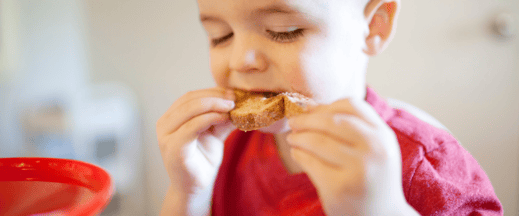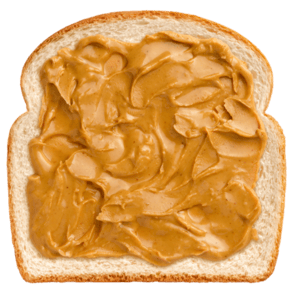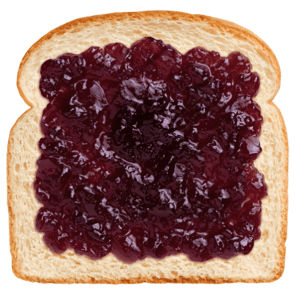
Originally September 15, 2021
How do you make a peanut butter and jelly sandwich? I posed that question to a random selection of contacts via text message. What did I discover? Everyone in my sample group spreads on the PB first, then the J. There are a variety of ways though to apply the jelly, but in my random group, the jelly always comes second.
Peanut butter and jelly sandwiches make me think about Behavior Guidance, a dimension in the CLASS® toddler observation tool. Especially the first two indicators of behavior guidance: proactive and supporting positive behavior. Proactive is the peanut butter! It goes first. That layer of peanut butter is the base for the jelly, which promotes positive behavior.
Effective toddler teachers spread the foundation for young children to begin to understand what behaviors are acceptable. This foundation is the indicator "proactive." They do this work in a co-regulation relationship model, one steeped in a continuous circle of acknowledging and labeling emotions, responding to toddler's needs, and providing lots of comfort!
Proactive: The Peanut Butter Goes First

Let's set ourselves and the children up for success.
Toddler teachers sometimes feel like they are running around all day putting out behavior "fires." But, with a little bit of advanced planning, toddler teachers can move from reactive (putting out fires) to proactive guidance. Does your daily schedule look a little too much like a Pre-K classroom's routine? Consider a daily schedule that reduces waiting times, long group times, and those really big full-group transitions. Do children lose interest in activities quickly? Provide lots of choices, be ready to switch it up, and always have novel items at the ready to hold interest. And finally, think through some toddler-appropriate behavior expectations.
-
-
- Be near and aware of all the children in the room. "I see you, Samia; you are going to the book area."
- Keep rules positive. "We paint the paper on the easel."
- Keep rules simple. "Walking feet inside keeps you safe."
- Use lots of rule reminders. "Playdough stays at the table."
-
Supporting Positive Behavior: Next Comes the Jelly
Okay, we know toddlers are in the process of learning how to self-regulate and manage their behavior. They are taking their cues from adults. Toddlers still need adults to co-regulate with them; adults help children manage and recover from emotionally charged experiences. And toddlers are learning all about appropriate behavior when adults intentionally point out those well-behaved moments over and over again!
Spreading the jelly on the peanut butter is not for the faint at heart! It takes a lot of watching, talking, and tending to toddler's behavior every day!
-
-
- Point of desired behavior often. "Thomas, you are sitting at the table to eat your snack."
- Redirect misbehavior. "You want to throw blocks. Blocks are for building. Balls are for throwing. Let's build together."
- Give simple directions that are easy to follow. "Throw your cup in the trash, please."
-
I hope you are excited to use the peanut butter and jelly analogy as you guide children's behavior in your toddler or family childcare setting. How we manage the transition from infancy to preschool sets a child up for success as they move towards self-regulation. The reward, of course, is watching the older toddlers and young preschoolers manage rules and routines, all resulting from the adult's hard and diligent work in those tender toddler months!

